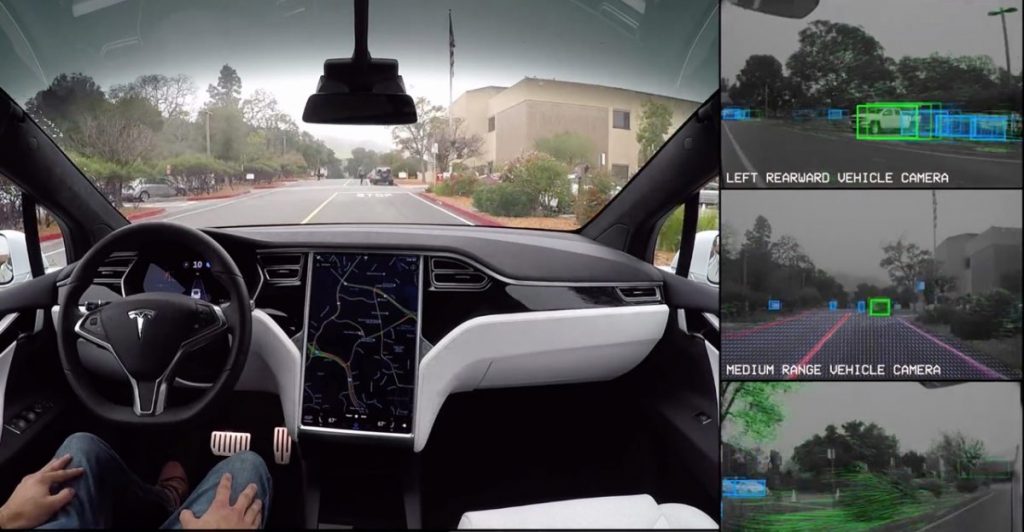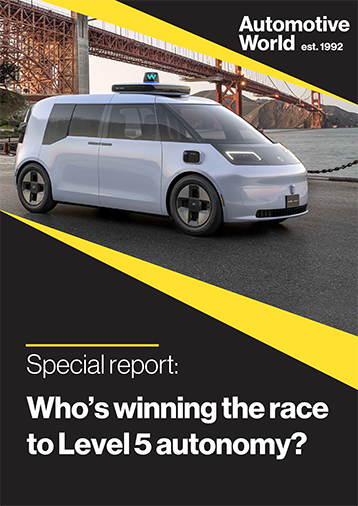While the industry is charting new territory to eventually launch fully automated vehicles (AVs), there is still a long way to go before those vehicles are viable for both consumers and roads.
The most pressing focus for major automakers in the near future will continue to be the customer experience and their efforts towards bringing electric vehicles (EVs) to market successfully. It will be the look and feel of the car, and how it improves and engages with the digital lives of consumers, that will create the most brand loyal customers. However, this evolution will also power the movement toward and confidence in AVs.
While truly autonomous vehicles are a longer-term focus as the technology evolves, it is important to understand where the industry is today, the current level of automation experienced by the majority of consumers, and who will lead the way in building the future of AVs.

What is Level 5?
The Society for Automotive Engineers has created a useful taxonomy for understanding the different levels of automation present in vehicles. The six stages begin at Level 0, where there is no automation present. Many vehicles on the road today are Level 0, meaning the human driver is fully in control of the vehicle and performs all of the dynamic tasks associated with driving. As the levels progress, there is more automation present.
Examples of Level 1 automation include aspects like driver assistance and adaptive cruise control. In this level, humans are still in full control but there’s a component of convenience and safety, albeit very basic to the current car standards. Examples of automation at Level 2 are advancements like lane assist, but the driver still controls the car. Examples of Level 3 are much rarer, such as the Audi A8 sedan AI Traffic Jam Pilot system. This is still in the approval stages across the US and other countries. There’s a big difference between Levels 2 and 3 when it comes to what is expected of the human driver.
Nearly half of 18- to 34-year-old Americans say they would consider owning a self-driving car
Level 5 represents a fully automated vehicle, where the vehicle is capable of performing all driving functions under any conditions. This means that while a human can take over driving if desired, it is not necessary. The end goal of Level 5 is for every vehicle on the road to be fully automated. There are currently no public examples of Levels 4 and 5 (high automation and full automation). There’s still debate over when full automation will be a reality, but the industry is taking steps to get there.
Many newer vehicles today are considered Level 1 or 2 and make use of advanced driver assistance systems and technology to help drivers park, manage cruise control, stay in lanes, and more. As these features become standard in newer vehicles, they will help consumers to become more familiar with autonomous tech. This familiarity is key, as forthcoming research from Publicis Sapient in collaboration with Epsilon reveals: nearly half of 18- to 34-year-old Americans say they would consider owning a self-driving car. Older generations are less likely to agree that self-driving vehicles are safe to use or that they will make driving safer.
While highways are not filled with AVs right now, that does not mean they won’t be in the near future. Most OEMs, as well as start-ups and Big Tech, have AV programmes and research in their portfolios that is pushing society toward a Level 5 world. It will take years for the first Level 5 vehicle to reach mass scale and longer still for them to make up the majority of vehicles on the roadway. However, the industry is making significant progress towards these goals.

What’s fuelling industry competition?
The first company to get there will be known for being the Level 5 pioneer, and this will change its brand forever. With the partnership models they are all forging, the race will be neck-and-neck until the end. Just as Tesla equals EV right now, the brand that gets to Level 5 will be known as the autonomous driving brand. But first to market does not mean best in the market, and over time, similar to the EV space, others will catch up. The autonomous space is complex, requiring infrastructure be in place to achieve Level 5. No one in the industry can go at this alone and it is not a product launch they are working on, but on building a necessary change in lifestyle, and trust.
The advancements in artificial intelligence, technology and the Internet of Things (IoT) are giving new test grounds for what is to come with AVs. There is still much to be done in the way of technological adoption and understanding, but facilities like MCity in Michigan have paved the way for creating the future of what’s possible within the realm for AVs and a more connected, data-driven transportation and mobility industry.
The push for Level 5 automation must be a joint effort
General Motors is considered one of the most vocal automakers in pushing for commercially viable Level 5 vehicles, and Tesla will also charge forward given it already has an EV platform to fuel its business. Technology companies like Apple, Aurora, Microsoft and Waymo are already disrupting, advancing and cementing a place for AVs in the future, and are partnering with global OEMs. Given it won’t be a reality for a few years, the industry will see target geographies where these technology players, Tesla and the OEMs continue to evolve the technology, targeting roll outs in the next few years. In addition, Uber and Lyft’s business models ultimately rely on AVs so it is likely they will build momentum, but it will be cautious until the technology and rules of the road work with the needs of AVs.
Collaboration
Going it alone is not a viable option. The push for Level 5 automation must be a joint effort and incorporate multiple stakeholders from OEMs and start-ups to governments and non-automotive sectors. Given automation will impact how we travel, live and work, collaboration must stretch across anything that touches mobility.
One area that it can impact significantly is accessibility for those who cannot drive and need reliable transportation—this will require not only working with governments but also healthcare systems and providers. Retail and financial services sectors will benefit too as access to their services will be opened up to more people; the approach to customer experience will need to change as delivery services and public and personal transportation elevate to Levels 4 and 5.
AVs will ultimately drive continued transformation of everything we do and how we connect with the world around us.
Alyssa Altman is Head of Transportation and Mobility at Publicis Sapient




